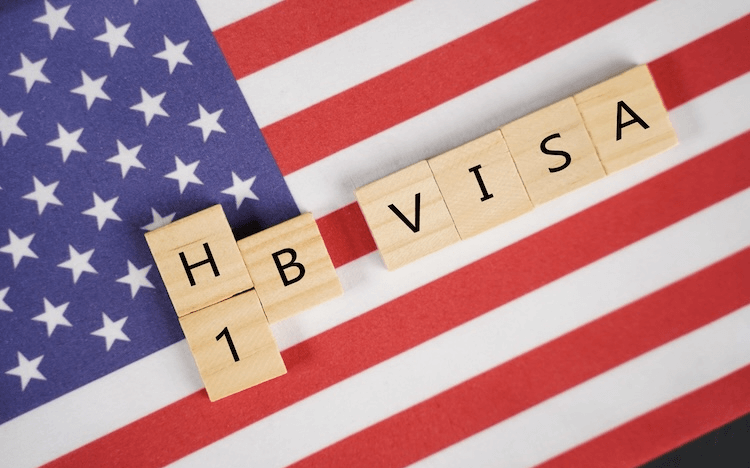
Pathways for U.S. H-1B Visa Holders to Move to Canada: Opportunities for a Faster Transition
As more H-1B visa holders in the United States look for ways to transition to permanent residency, Canada offers a viable and often quicker alternative to pursuing a U.S. green card. With its Express Entry system and multiple immigration pathways, Canada provides a clear route for skilled foreign workers seeking stability and growth in a new country.
H-1B visa holders in the U.S., especially those aiming for a green card, can often find that Canada’s immigration system offers a more straightforward and faster process. The U.S. green card application can be fraught with complications, including long waiting times and lottery-based selection. On the other hand, Canada’s Express Entry system works on a merit-based pool, giving priority to the most qualified candidates. This competitive system focuses on factors such as education, work experience, and language proficiency to determine eligibility.
If you are an H-1B holder looking for a more efficient path to permanent residency, here’s a detailed overview of Canadian immigration options for skilled workers like yourself.
Key Immigration Pathways for H-1B Visa Holders to Canada
Canada offers several immigration pathways for skilled foreign workers, including H-1B visa holders, to move permanently or temporarily. Below is a breakdown of these options and the eligibility criteria associated with each.
1. Express Entry: A Fast Track to Canadian Permanent Residency
The Express Entry system is the most direct route to permanent residency in Canada. It ranks candidates based on a variety of factors, such as education, age, work experience, and language proficiency. This system ensures that the most qualified candidates are given priority.
Eligibility Criteria for Express Entry:
- Applicants must meet the requirements of one of three federal immigration programs:
- Federal Skilled Worker Program (FSWP): For skilled professionals with at least one year of work experience.
- Canadian Experience Class (CEC): For candidates with at least one year of Canadian work experience.
- Federal Skilled Trades Program (FSTP): For trades workers with experience in specific fields.
Applicants who score highly based on these criteria will be invited to apply for permanent residency (PR). The average processing time for Express Entry PR applications is just six months.
Additional Options to Improve Your Chances: If your Express Entry score is not competitive enough, you may increase your chances by applying for a temporary work permit in Canada. By gaining Canadian work experience, you will earn additional points for your Express Entry profile.
2. Provincial Nominee Program (PNP): Path to PR via Provincial Nominations
If you don’t qualify for Express Entry or if your CRS score is lower than required, the Provincial Nominee Program (PNP) is another viable option. The PNP is designed to attract skilled workers who have an intention to settle in specific Canadian provinces or territories.
How PNP Works:
- Each province has its own immigration streams, and many are designed to target workers in specific occupations, such as healthcare and technology.
- Some PNPs allow direct application for nomination, while others require you to first be invited by the province.
Upon receiving a provincial nomination, applicants must apply to the federal government for permanent residency. Provinces like Ontario, British Columbia, and Alberta have active streams that prioritize skilled professionals, which could make this pathway a solid alternative to Express Entry.
3. Intra-Company Transferees (ICT): For Workers in Multinational Corporations
The Intra-Company Transferee (ICT) program allows multinational corporations to transfer employees to their Canadian branches. This is an excellent option for H-1B visa holders working for global companies with Canadian offices.
Eligibility for ICT:
- You must be employed with the company for at least one year in the past three years.
- You should be transferring to a similar role at the Canadian location (executives, managers, or specialized employees).
- Executives and managers can stay up to 7 years, while employees with specialized knowledge can stay up to 5 years.
ICT can act as a stepping stone to permanent residency, especially for individuals who wish to transition to Express Entry after gaining Canadian work experience.
4. Temporary Foreign Worker Program (TFWP): Gain Work Experience in Canada
For H-1B holders who are not yet eligible for Express Entry or PNP, applying for a Temporary Foreign Worker Program (TFWP) work permit might be a viable option. This program allows you to live and work in Canada temporarily.
Eligibility Requirements for TFWP:
- A valid job offer from a Canadian employer.
- The employer must obtain a Labour Market Impact Assessment (LMIA) to prove that no Canadian citizen or permanent resident can fill the position.
Working in Canada for a few years under a TFWP work permit may allow you to accumulate enough Canadian work experience to later qualify for Express Entry or provincial nomination.
5. Free Trade Agreements (FTA): Work Permits Based on International Agreements
Under Canada’s trade agreements with the U.S. and other countries, foreign workers may be eligible for a work permit without needing a Labour Market Impact Assessment (LMIA).
Eligibility for FTA Work Permits:
- You must be a citizen of a country covered by one of Canada’s FTAs, such as the Canada-United States-Mexico Agreement (CUSMA).
- Your job must align with the approved list of occupations under the FTA, such as scientists, management consultants, and medical professionals.
FTA work permits are usually tied to specific employers and can be an excellent option for those coming from countries with these agreements.
6. International Experience Canada (IEC): For Youth Seeking Temporary Work Experience
The International Experience Canada (IEC) program provides temporary work permits to young adults (typically between 18-35 years old) from specific countries, including the U.S.
Eligibility Criteria for IEC:
- Applicants must meet age requirements (18-35, with some exceptions).
- There are three subcategories under IEC:
- Working Holiday: No job offer required; allows open work permits.
- Young Professionals: For those with a job offer in Canada; tied to the employer.
- International Co-op (Internship): For students pursuing internships or placements.
IEC is an ideal option for younger workers seeking temporary opportunities in Canada, providing a chance to gain work experience that can help with future permanent residency applications.
Spousal Open Work Permits (SOWP): Support for Spouses of H-1B Holders
If you’re planning to move to Canada on a work permit, your spouse may be eligible for a Spousal Open Work Permit (SOWP), which allows them to work for any employer in Canada.
Eligibility for SOWP:
- Typically available for spouses of individuals who hold work permits under certain programs like TFWP, FTA, or ICT.
This program offers great flexibility, ensuring that your spouse can also work in Canada while you establish your career.
Conclusion: A Path to Stability in Canada
With over 360,000 immigrants expected annually under Canada’s immigration plan, H-1B visa holders can find multiple pathways to move to Canada, whether as temporary foreign workers or permanent residents. While the U.S. green card process may be lengthy and uncertain, Canada’s Express Entry and Provincial Nominee Programs provide clear routes for skilled workers to settle in Canada.
As the demand for skilled workers continues to rise, Canada’s commitment to welcoming diverse talent ensures that there are numerous opportunities for H-1B holders seeking a fresh start and a brighter future. Whether you are aiming for permanent residency or a temporary work experience in Canada, the country offers pathways that can align with your career and lifestyle goals.
For a consultation about Immigration options, reach out to the CAD IMMIGRATION today!





